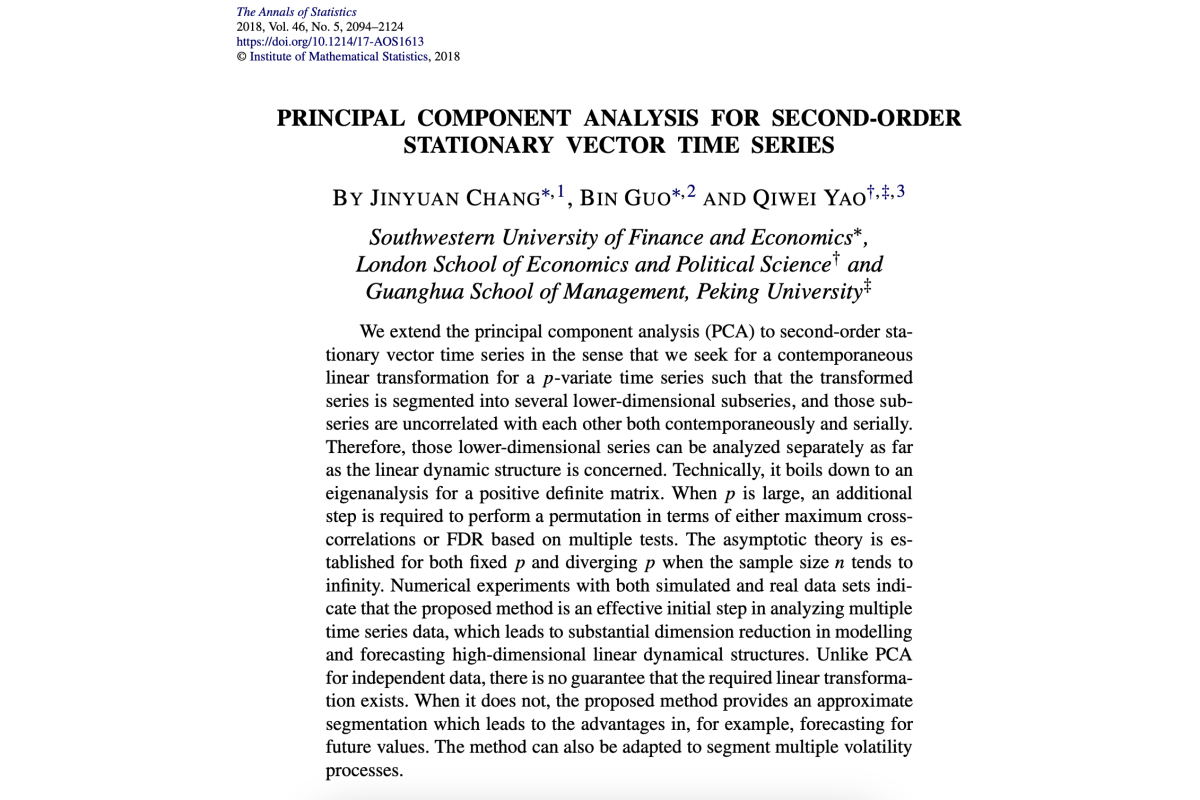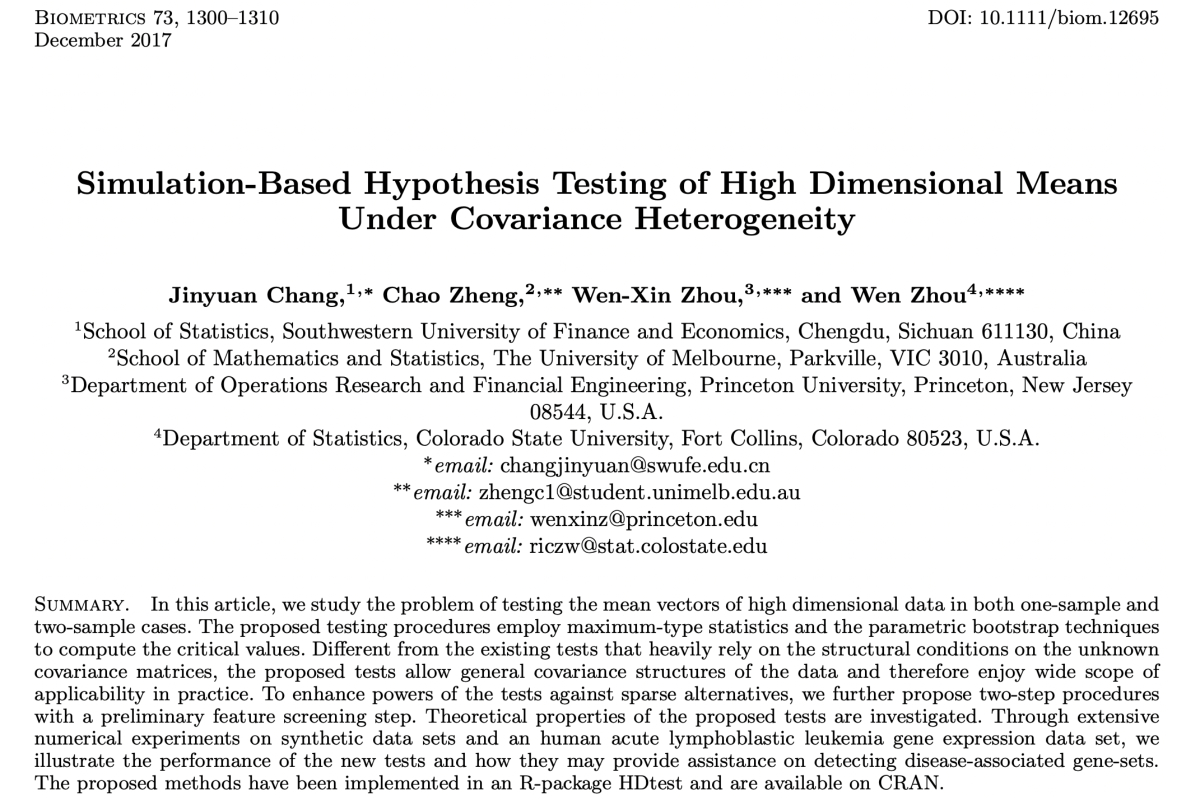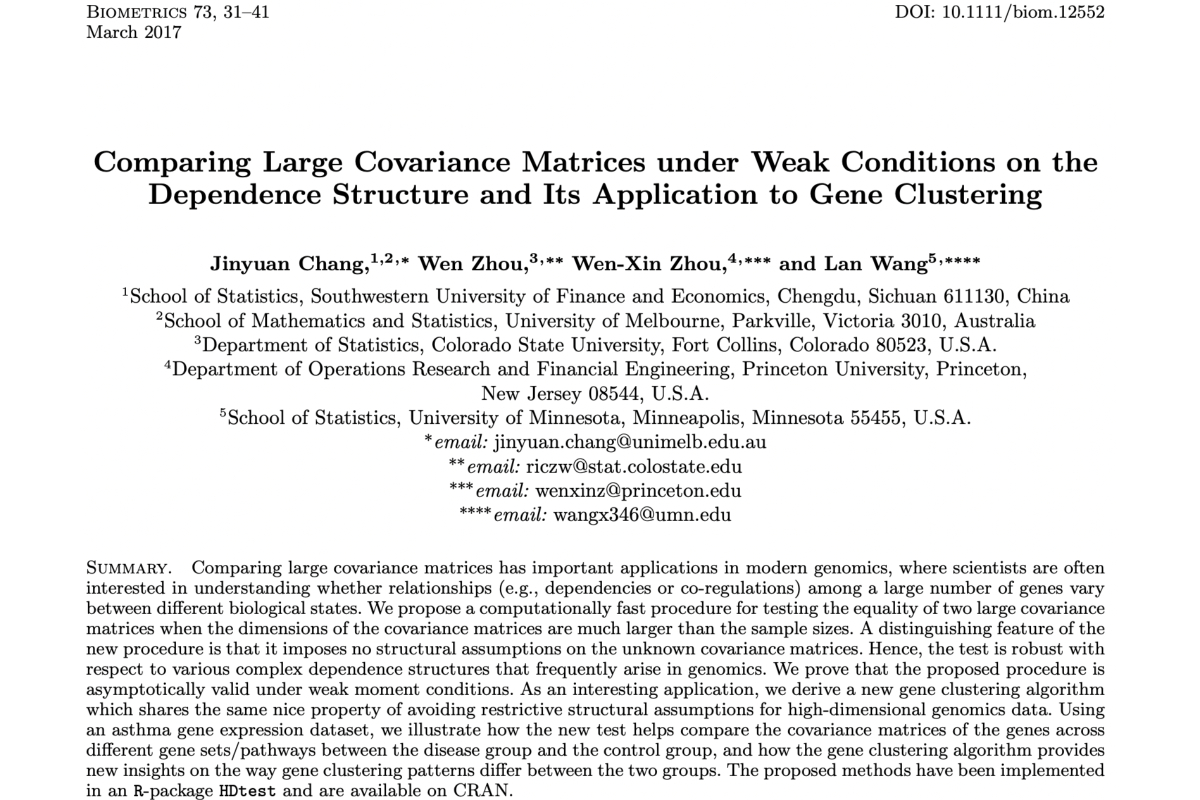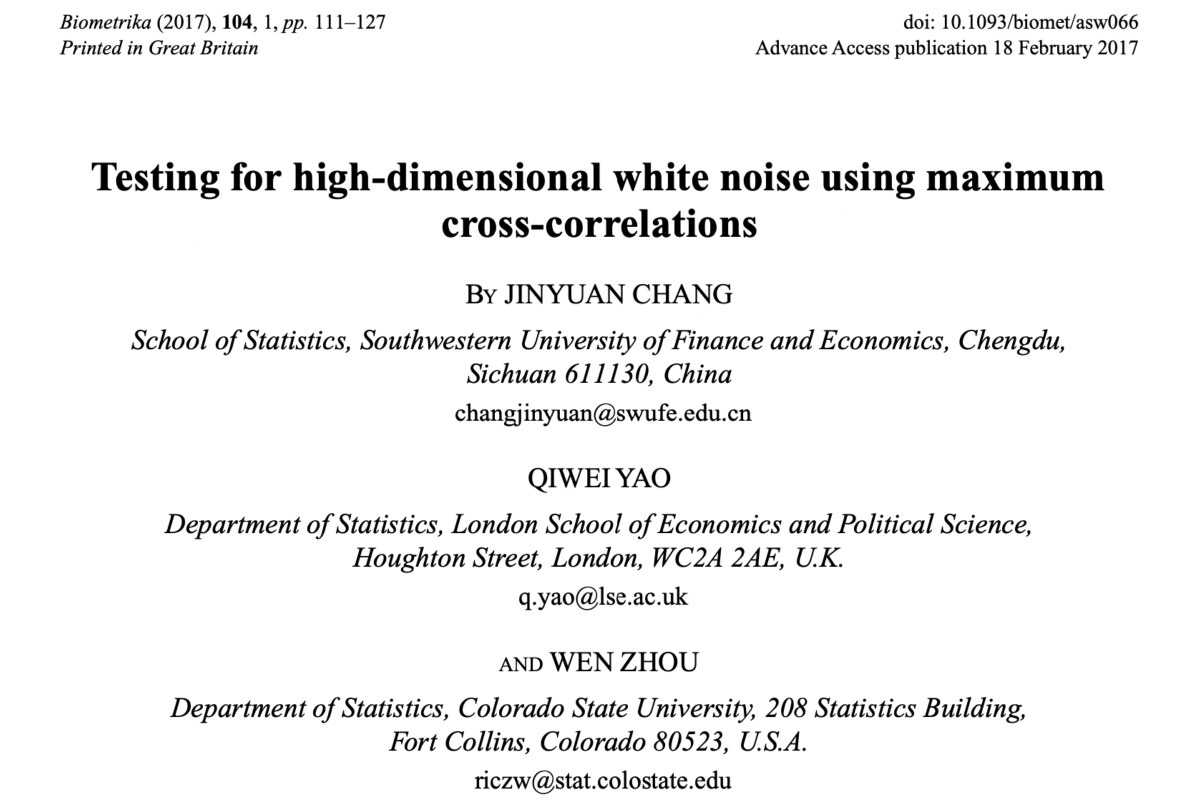
Chang, J., Guo, B., & Yao, Q. (2018). Principal component analysis for second-order stationary vector time series. Annals of Statistics, 46, 2094-2124.
We extend the principal component analysis (PCA) to second-order sta- tionary vector time series in the sense that we seek for a contemporaneous linear transformation for a p-variate time series such that the transformed series is segmented into several lower-dimensional subseries, and those sub- series are uncorrelated with each other both contemporaneously and serially. Therefore, those lower-dimensional series can be analyzed separately as far as the linear dynamic structure is concerned. Technically, it boils down to an eigenanalysis for a positive definite matrix. When p is large, an additional step is required to perform a permutation in terms of either maximum cross- correlations or FDR based on multiple tests. The asymptotic theory is es- tablished for both fixed p and diverging p when the sample size n tends to infinity. Numerical experiments with both simulated and real data sets indi- cate that the proposed method is an effective initial step in analyzing multiple time series data, which leads to substantial dimension reduction in modelling and forecasting high-dimensional linear dynamical structures. Unlike PCA for independent data, there is no guarantee that the required linear transforma- tion exists. When it does not, the proposed method provides an approximate segmentation which leads to the advantages in, for example, forecasting for future values. The method can also be adapted to segment multiple volatility processes.









